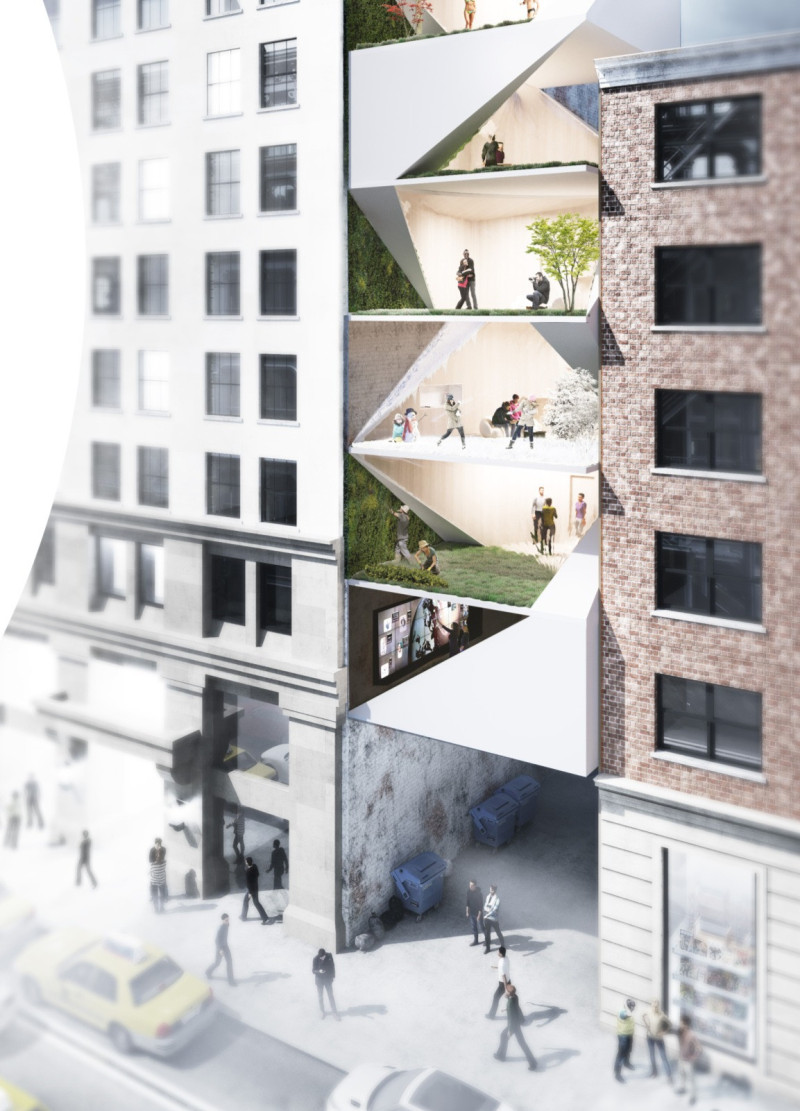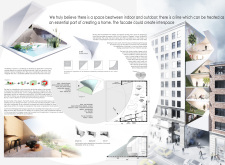5 key facts about this project
The project presents a thoughtful relationship between indoor and outdoor spaces. Set in an urban environment, the design emphasizes practicality while integrating nature into daily life. The concept focuses on dissolving the boundaries that usually separate living areas, creating a connected atmosphere that enhances both the visual appeal and functional experience.
Integration of Indoor and Outdoor Spaces
The design revolves around merging the indoors with the outdoors. By removing traditional barriers, it promotes an open-plan layout that invites natural light to flow freely. The kitchen, dining area, and living room are linked, which encourages movement and interaction among different spaces. This thoughtful arrangement enriches the living experience by making it feel more expansive.
Innovative Material Use
Sustainability is a key aspect of the design, evident in the selection of materials. Plexiglass® Greencast® GS is used for membrane construction. This recycled material allows light to enter while ensuring energy efficiency. Additionally, SCALITE®, made from fish shell, serves multiple purposes indoors, showcasing an eco-friendly approach. The facade makes use of seaweed-prefabricated straw panels, further highlighting the commitment to environmental responsibility.
Response to Environmental Context
The architecture interacts meaningfully with its surroundings. It includes systems for rainwater collection and wastewater processing, which help lessen the environmental impact. These features not only contribute to sustainability but also support urban farming by turning waste into usable fertilizer. Such elements encourage a relationship between residents and their environment, enhancing the home’s functional benefits.
Technological Integration
Advanced technologies are integrated into the design to improve comfort and adaptability. Digital screens and interactive wall systems respond to changing conditions, reflecting a modern approach to living. These features help meet contemporary needs while maintaining a link to nature.
One notable design detail is the rotating base, which allows different spaces to engage with one another more fully. As individuals move through the home, they are reminded of the balance between their indoor environment and the surrounding world.



















































